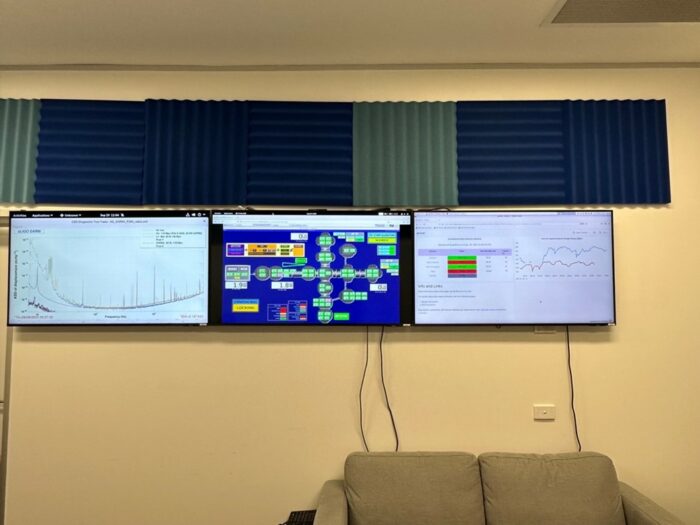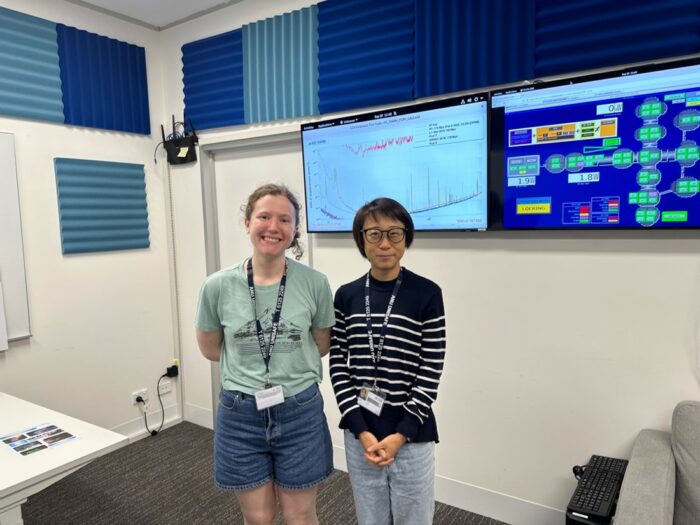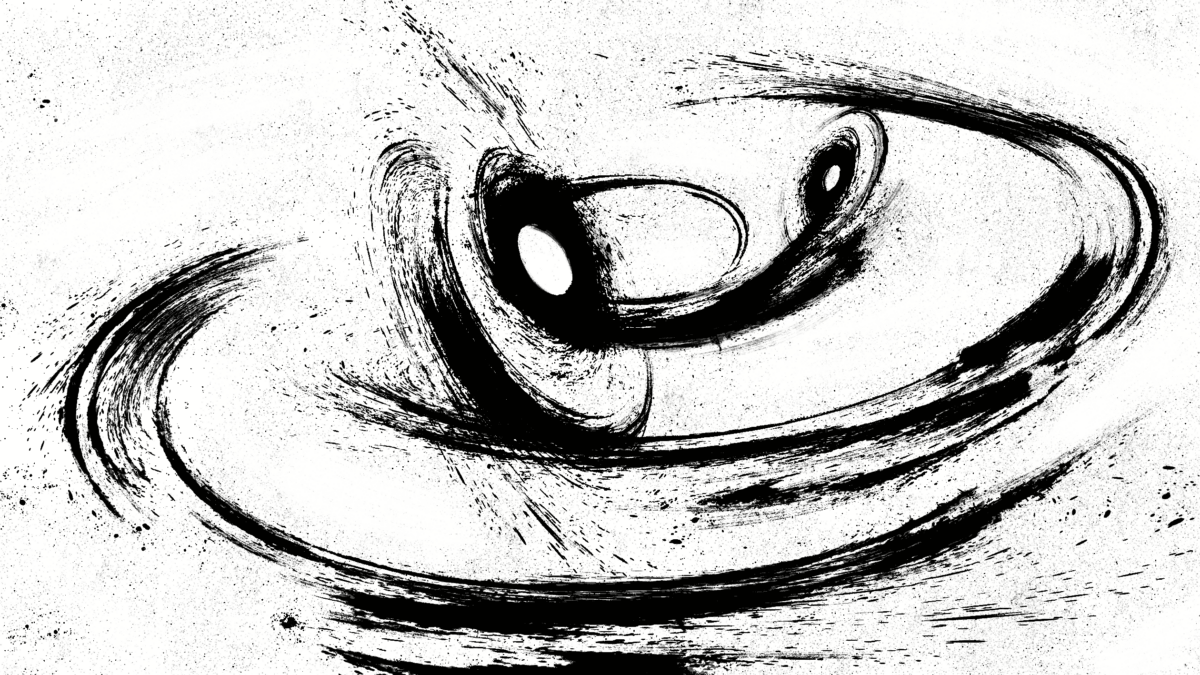At any given moment in time, there are countless ripples travelling through spacetime, traversing the very fabric of our universe. These ripples are known as gravitational waves, and were first predicted by Albert Einstein in 1916 in his general theory of relativity.
Almost a century later in 2015, direct evidence of gravitational waves was finally obtained when the Advanced LIGO (Laser Interferometer Gravitational-wave Observatory) detectors, located in Hanford, Washington and Livingston, Louisiana, USA detected the long-awaited signal.
The 0.2 second audible signal, which was described to resemble the “chirp” of a bird, was actually the product of a black hole collision. This event occurred more than 1 billion years ago. Two massive black holes merged into one, warping the fabric of spacetime and sending ripples through the universe which were eventually detected on Earth as tiny vibrations.
The successful LIGO experiment sent its own waves through the science community. The search for gravitational waves had consisted of decades of unrelenting hard work by over a thousand physicists around the globe and billions of dollars of investment, so the news was both extremely exciting and highly anticipated.
Now you might be wondering what is next for gravitational wave research. After all, the amazing detection of gravitational waves was already accomplished in 2015.
However, in reality, the exploration of gravitational waves has only just begun as researchers continue to use LIGO and a growing network of detectors around the world (e.g. LIGO-Virgo-KAGRA collaboration) to investigate the nature of our universe. In exciting news, the ANU, as part of the LIGO Scientific Collaboration (LSC), will play a central role in this global venture.
Last year I was lucky enough to get the chance to interview Dr Lilli Sun and Dr Jennie Wright, astrophysicists from ANU’s Centre for Gravitational Astrophysics to gain some further insight into the current field of gravitational wave research and ANU’s new LIGO remote control room.
Firstly, could you explain what a gravitational wave is in simple terms?
Jennie: A gravitational wave is a sort of stretching and squeezing of spacetime itself. When we have mass in the universe, it causes spacetime to curve, as explained in the theory of General Relativity. A gravitational wave is like a ripple instead of just a curve that stays still.
Lilli: You can also think of an analogy like a water wave – for example, dropping a stone in water and then seeing ripples spreading out. When we have something very heavy, like black holes that collide, they trigger those ripples in spacetime.
What are your specific research focuses and what are you currently working on?
Lilli: I do mostly astrophysics; using gravitational waves to study black holes, neutron stars, and even searching for dark matter. I do a lot of data analysis to see what the gravitational-wave signals tell us – e.g. whether it tells us that Einstein and his general theory of relativity is right or if there is something unexpected.
One of my projects is about searching for dark matter particles using gravitational waves – we don’t know if they exist or not, but analysing gravitational wave signatures is one possible way to look for them. I also work a bit on detectors, working with instrumentalists like Jennie.
Jennie: What I work on is somewhat related. I’m an instrumentalist as Lilli said, so I’m an experimental physicist and my job has two parts. Half of my time I spend at ANU, working on technologies that we can use to improve gravitational wave detectors of the future. We’re making them more sensitive so they can see further out into the universe and also can see a wider range of signal frequencies. And so, I work on developing technology that basically tries to distinguish things near the detector that look like gravitational wave sources, but actually aren’t – like a truck breaking near the detector, or just air moving near it.
The other part of my job is to help improve the current detectors. Since we use light in the gravitational wave detector to measure the stretching and squeezing of spacetime, we want to have as much light in there as possible. But, because mirrors and optical systems aren’t perfect, we sometimes lose quite a lot of light, so I look at those diagnostic measurements to try to figure out where we’re losing light.
Now that gravitational waves have already been detected, what is next for the field of gravitational wave research?
Lilli: There are many aspects actually: the 2015 discovery was only the beginning. The 2015 event for two black holes colliding into each other and the famous 2017 event for a two neutron star collision are very highlighted events, but now we are collecting many more of them including some special systems. The large number of detections will bring us important information of the population.
There are other types of gravitational waves. For example, we are looking for very faint gravitational waves from a single spinning neutron star. Neutron stars are not perfect spheres, so when they rotate they can generate very weak gravitational waves, which is something we are searching for. Another example is to probe dark matter using gravitational waves. So, we need more sensitive detectors and more of them in the network.
Moving onto the ANU remote control room, what exactly is a control room and how specifically would the remote control room work?
Jennie: So, a control room is usually a room you have next to a lab with an experiment in it: usually one that needs to be in either a really clean environment, or a slightly dangerous environment. So, you set all the physical parts of it up, so you can obtain electronic signals through to your control room that tell you what is happening. And then you can do all the data-taking and analysis from that control room.
In LIGO, they have the control rooms right next to the detector because they don’t want to be walking around next to the detector while it’s running, as they might introduce noise to it. They also have a whole bank of screens which decipher how each sub-system is working.
About the remote control room: whilst we don’t have a gravitational wave detector in Australia, many Australian scientists have been involved in gravitational wave detection from the start, and so this allows us to participate in improving the detector remotely. So, you can see on some of the screens here, I have a read-out of the different sub-systems and if they’re working correctly. For example, green tells us that they’re observing data and red tells us that they’re down and need to be fixed. And this is all in real time.
That’s really useful, because before we had this, we just had the little screen on our computers, and you had to try to view everything simultaneously and it was quite difficult. My colleagues and I will also occasionally do shifts when the detector is running, because we might have to call up people in other countries. If there’s an exciting gravitational wave event, we sometimes need to announce things to other astronomers, so they can point their telescopes to certain parts of the sky.
Lilli: Although it’s a ‘remote’ control room, you can still control some of the sub-systems of the detector. It’s just that we need to be very careful, especially during observation. There will be someone in charge in the real control room, and we can collaborate with them. The advantage of having the remote control room is that it makes it much easier for Australian colleagues, as we are not close to the detector, but we can read off the real-time information in a much more convenient way, on the other side of the world.
So, the detector isn’t always on all the time?
Jennie: There’s a trade-off between the physicists who work on improving it, and the astronomers who want to collect data using it. If you improve the sensitivity, you’re more likely to see really exciting events we haven’t seen before. But if you increase the time the detector is on for, you’re also more likely to see more events. So, there are sometimes periods where we’re not touching the detector for around 18 months, and periods where there is no data collection for a year, and maintenance and upgrading occurs.
From a bigger perspective, what role is Australia and ANU playing in the further research of gravitational waves?
Lilli: Australia is one of the major collaborators in the large international LIGO-VIRGO-KAGRA collaboration. There is a large group here working on gravitational wave astrophysics and detector science. These days, Australian scientists also want to propose and work towards building an Australian detector in the future, which is pretty exciting.
Right now, we are also thinking about the next generation detectors – like what kind of design and technology is needed that can give us a one-order of magnitude increase in sensitivity, which can get us much deeper into the universe. Australian colleagues are working on both the existing science of gravitational waves, but also the future.
Jennie: In the past, Australia has developed sub-systems which are now used in the detector, contributing mirrors for example. Also, Lilli is in charge of the calibration group for LIGO, and that’s just an example, but we have a lot of staff in Australia who are leading some aspect of the LIGO scientific collaboration’s research. We’ve also been instrumental in the design of something called the Squeezer which is used in LIGO to improve its sensitivity, making the detectors the quantum instruments that they are.
Lilli: Regarding astrophysics and data analysis, there are quite a few large groups from different Australian universities within OzGrav working on the data being collected these days. A lot of studies are carried out in Australia, but we also work very closely with international colleagues.
What are some benefits of these large-scale projects, e.g. do they help bring countries closer together and encourage international cooperation?
Lilli: I think yes, definitely. These days, it’s getting difficult to do small narrow research projects by yourself. With projects like gravitational wave detectors, you have large instruments, and that involves many different aspects: you need to work with engineers on different sub-systems, theoretical physicists to understand how the astrophysics work, software engineers and data analysts for dealing with huge amounts of data, and also astronomers who do different kinds of follow-up observations. All these people are playing important roles, and they come from different countries, different parts of the world. Close collaboration is critical.
Jennie: I think it’s really useful to have these big projects, because any falling out between countries can get in the way. It also definitely broadened my horizons, as I’m from Scotland, which isn’t as multicultural. Without science, I definitely wouldn’t have travelled and experienced different cultures as much.
Last question, what’s your advice for students looking to get into this field or just interested in your research?
Lilli: I think there are lots of chances for students to talk to us and do small projects. If they’re really interested there are lots of ways to get into the field. We do lots of summer/winter projects and we also teach undergraduate courses, where we discuss gravitational waves at a more basic level. Many students are interested, and we have extended discussions and they come to us for small projects or Honours and end up staying for PhD.
Jennie: I think definitely the best way is just to email someone who works in the fields. Academics love students being interested in their research, otherwise they wouldn’t be working at a university and teaching. I’m really happy whenever a student asks me, and I think that’s how I got involved in the field too.
Lilli: Yes, definitely talk to academics and lecturers in the field if you’re interested.
Jennie: And I think that’s the same in all areas of science as well, people are super keen to tell you about their research, you just have to ask them.
Photograph of some of the screens in the control room.

Dr Jennie Wright (left) and Dr Lilli Sun (right) in the remote control room.

A huge thank you to Dr Lilli Sun and Dr Jennie Wright for taking the time to do an interview and for so generously sharing their knowledge.
We acknowledge the Ngunnawal and Ngambri people, who are the Traditional Custodians of the land on which Woroni, Woroni Radio and Woroni TV are created, edited, published, printed and distributed. We pay our respects to Elders past and present. We acknowledge that the name Woroni was taken from the Wadi Wadi Nation without permission, and we are striving to do better for future reconciliation.
